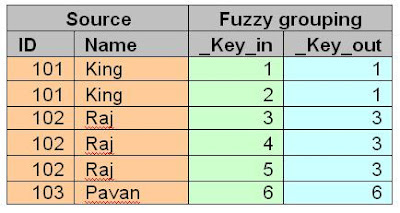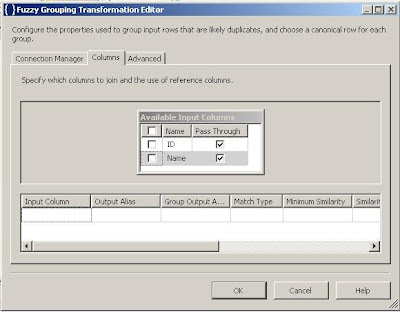Sample
package creation:
Requirement:-
Two
source tables are available EMP (is having Employee information) and DEPT (is
having department information).
EMP Table:-
CREATE TABLE EMP (ID INT,NAME VARCHAR(20),DEPT_ID INT)
GO
INSERT INTO EMP VALUES (101,'A',10)
INSERT INTO EMP VALUES (102,'B',20)
INSERT INTO EMP VALUES (103,'C',10)
INSERT INTO EMP VALUES (104,'D',30)
DEPT Table:-
CREATE TABLE DEPT (DEPT_ID INT,LOC VARCHAR(20))
GO
INSERT INTO DEPT VALUES (10,'Location1')
INSERT INTO DEPT VALUES (20,'Location2')
INSERT INTO DEPT VALUES (30,'Location3')
Join
the source tables based on ‘DEPT_ID’ column and load the source data into
target table “EMP_TARGET”.
EMP_TARGET:-
CREATE TABLE EMP_TARGET (ID INT,NAME VARCHAR(20),DEPT_ID INT,LOC VARCHAR(20))
Package
creation:
- Open BIDS.
- From Control flow items, drag and drop “Data flow task” into designer surface.
- From Data flow items, drag and drop tow “OLEDB Sources” into designer surface (Firs one is for “EMP Table” second one for “DEPT Table”)
- Map the "OLEDB Sources" with source tables.
- We need to sort the source data based on ‘DEPT_ID’ column because “Merge Join” transformation accepts only sorted data sets as input.
- We can sort the source data in two ways.o Using Sort transformation.o Using OLEDB source “Advanced Editor”
- In this example I used ‘OLEDB Source Advanced Editor’ to sort the source data sets.
- From Data flow items, drag and drop the “Merge Join” transformation into designer surface.
- Select ‘OLEDB source’ (EMP) green arrow and connect to the transformation. Then “Input Output Selection” Window will open. In that window, Select “Merge Join Left Input” from the “Input:” drop down list.
- Select second ‘OLEDB Source’ (DEPT) green arrow and connect to the transformation.
- Right click on “Merge Join” and select “Edit” option.
- Select ‘Join type:’ as Inner join and select the required columns and click “OK” button.
- From ‘Data flow’ items, drag and drop “OLEDB Destination” into Designer surface.
- Connect the ‘Merge Join’ transformation green arrow to ‘OLEDB Destination’.
- Map the ‘OLEDB Destination’ to the target table and execute the package.
Target
table Output:














































